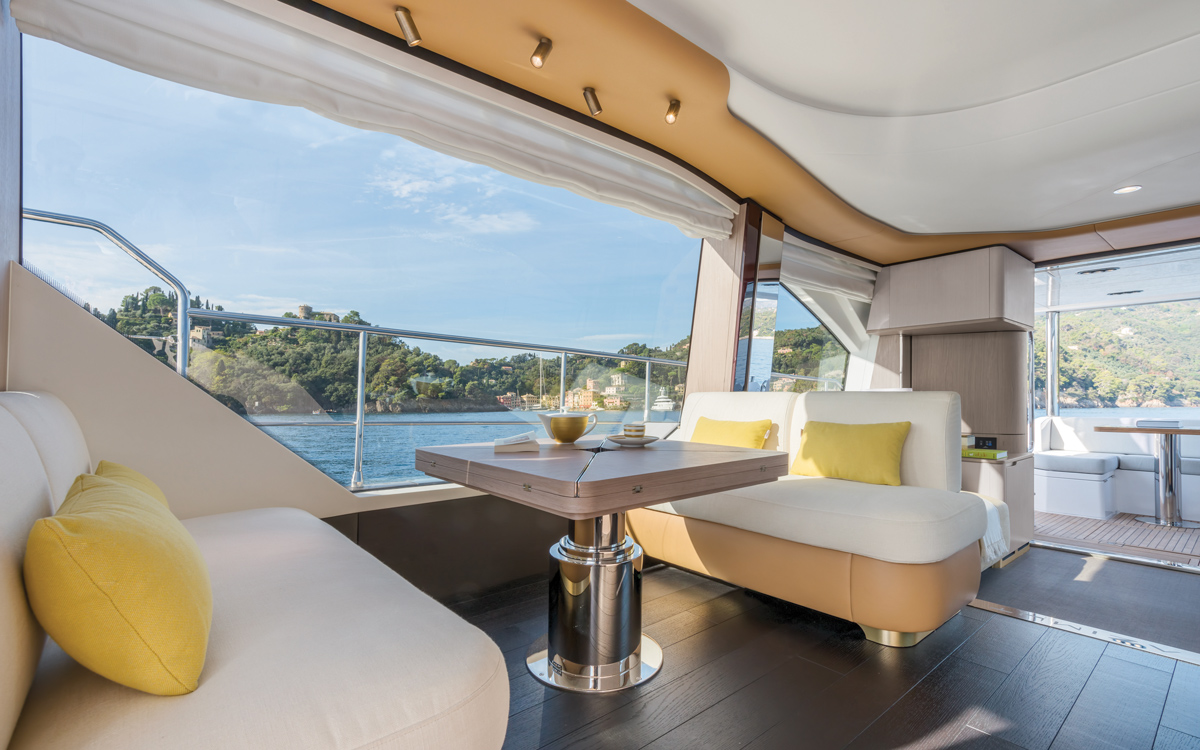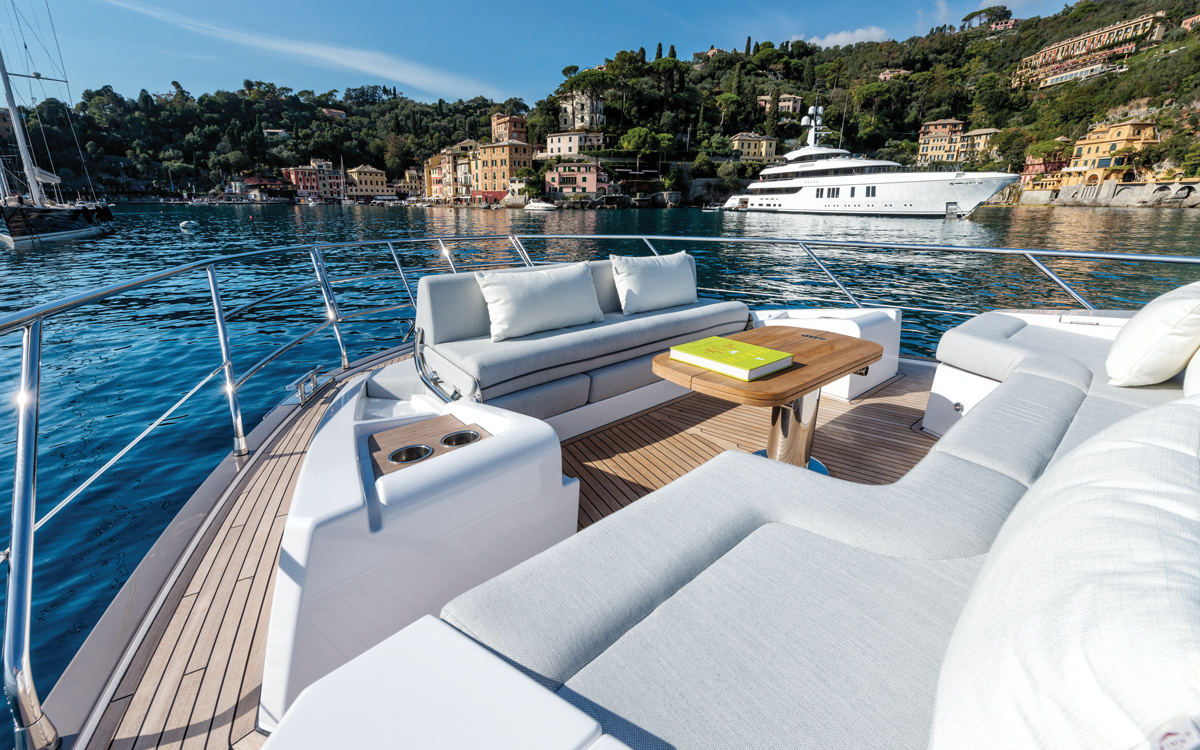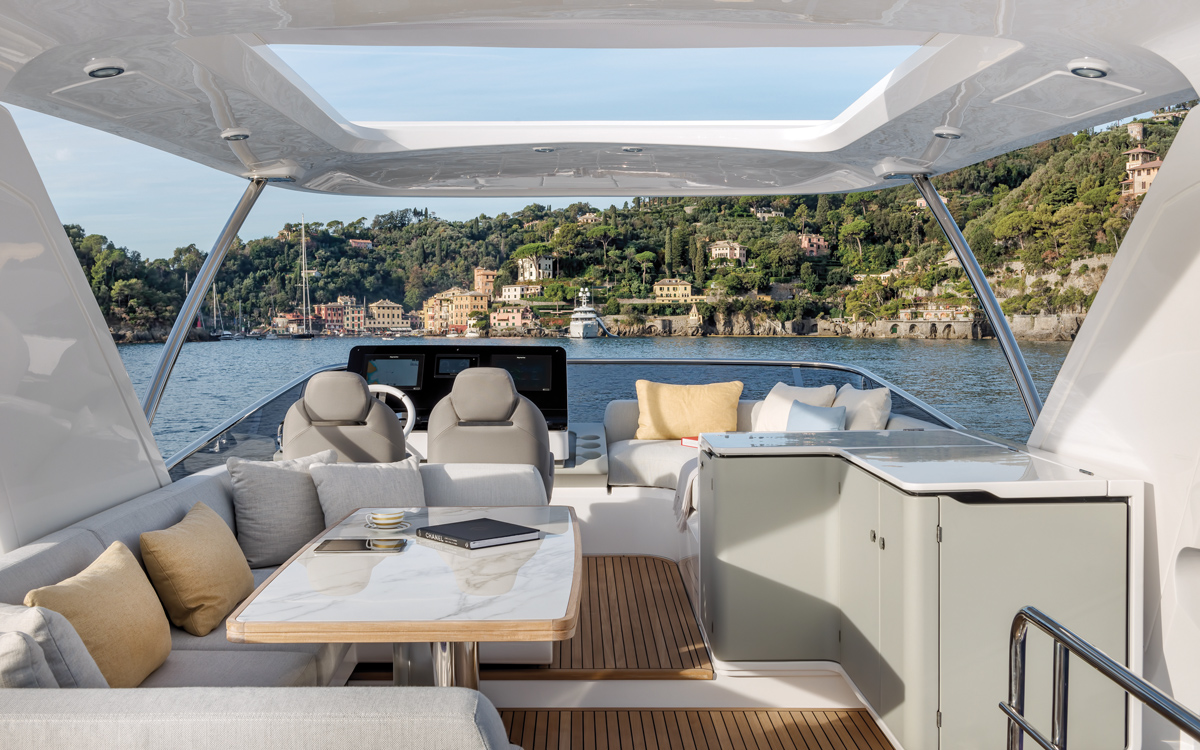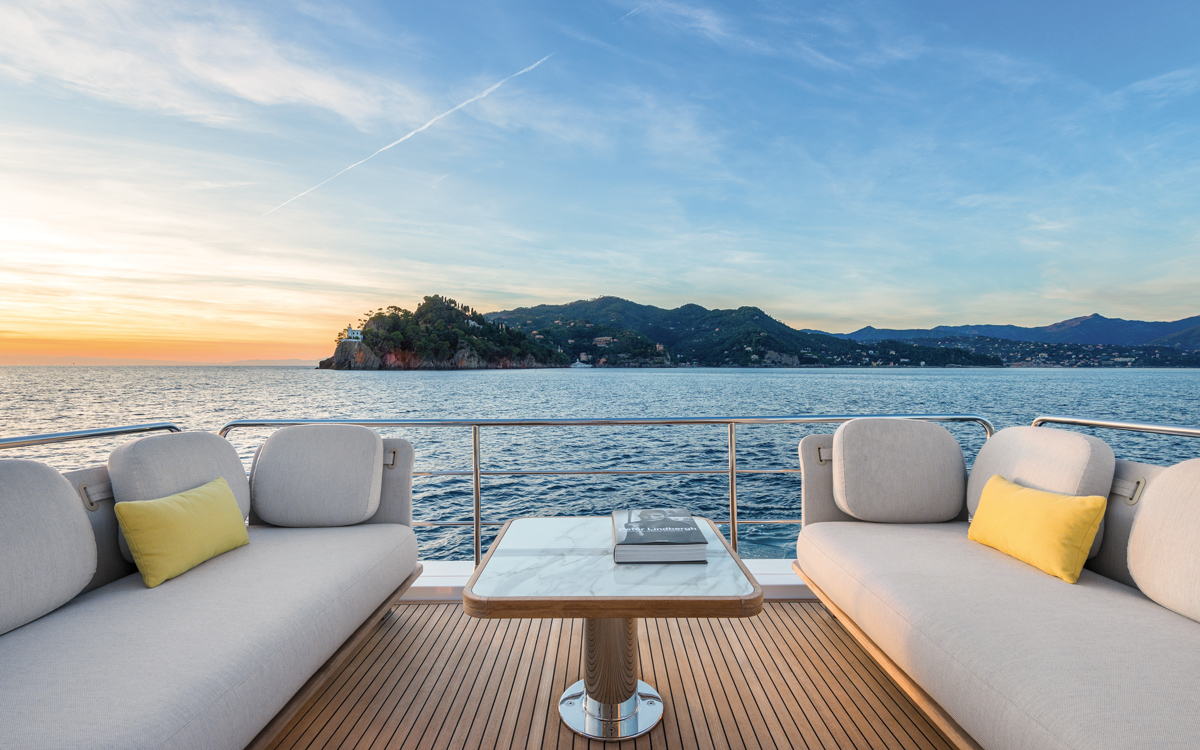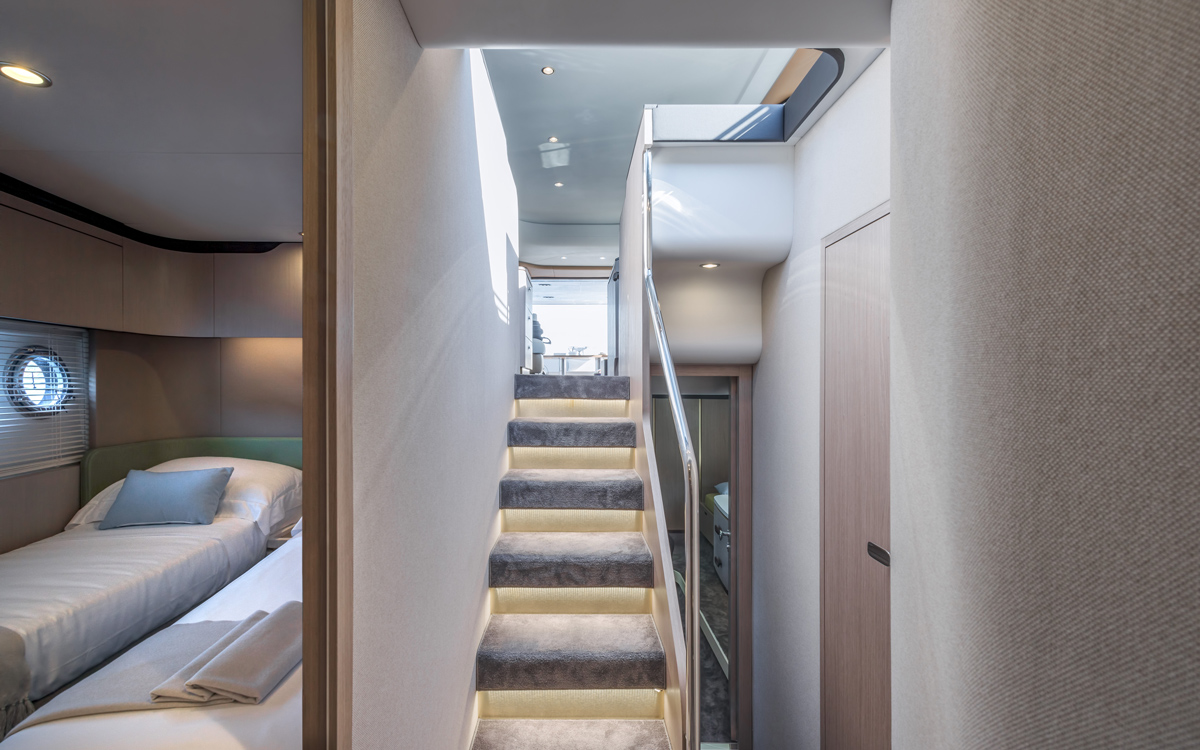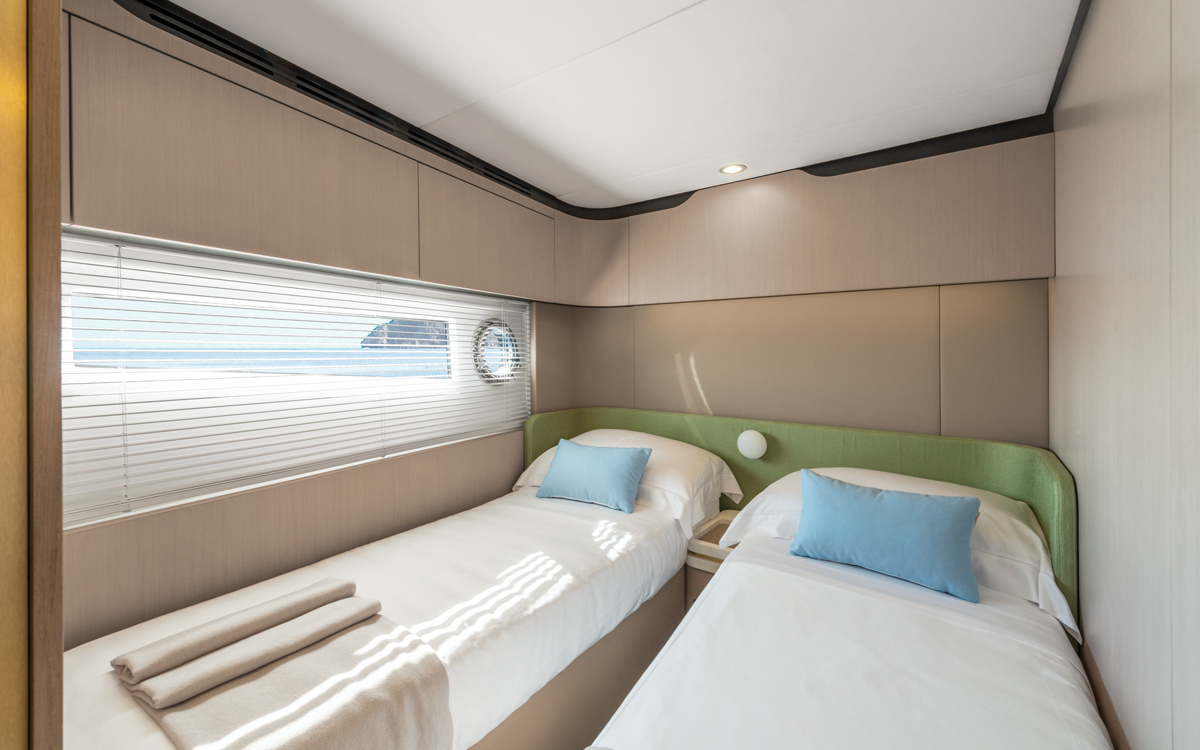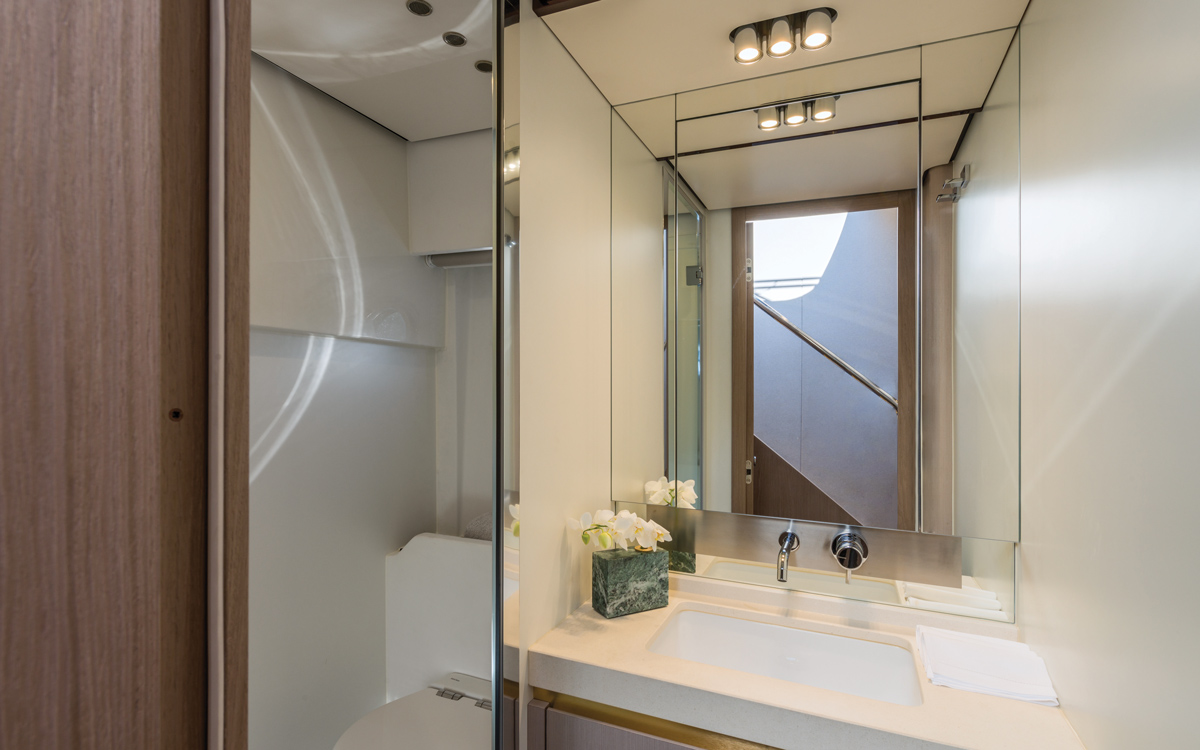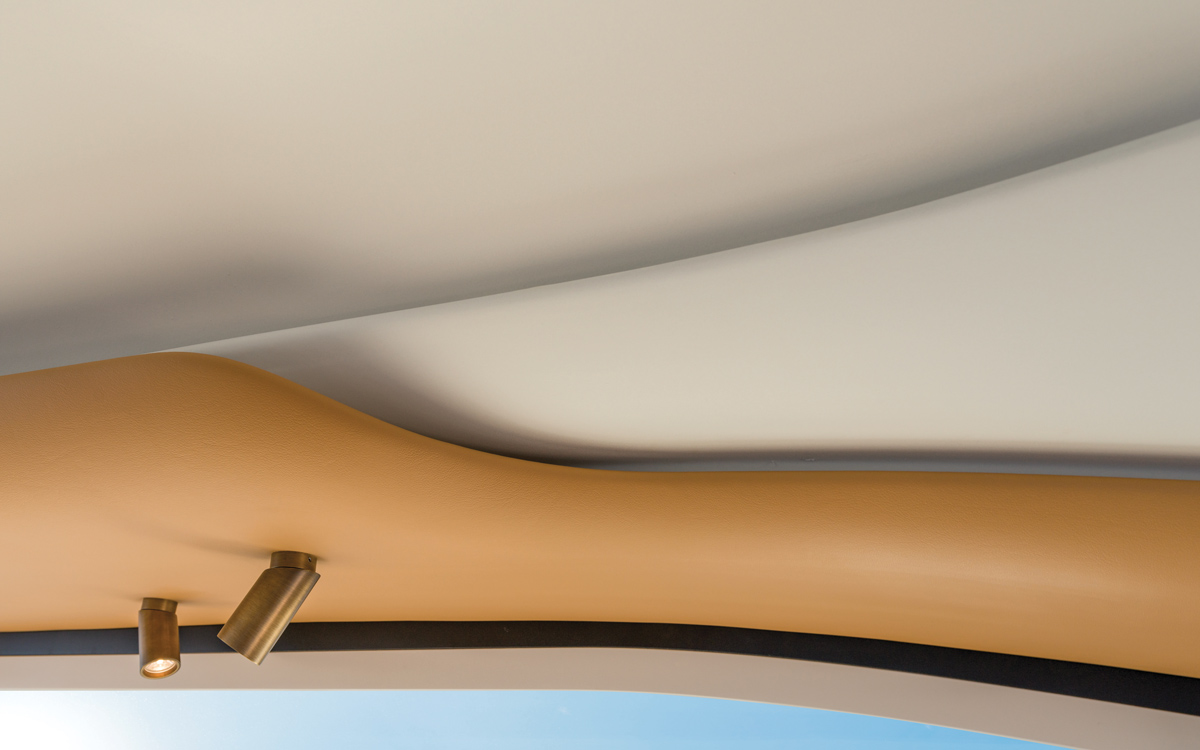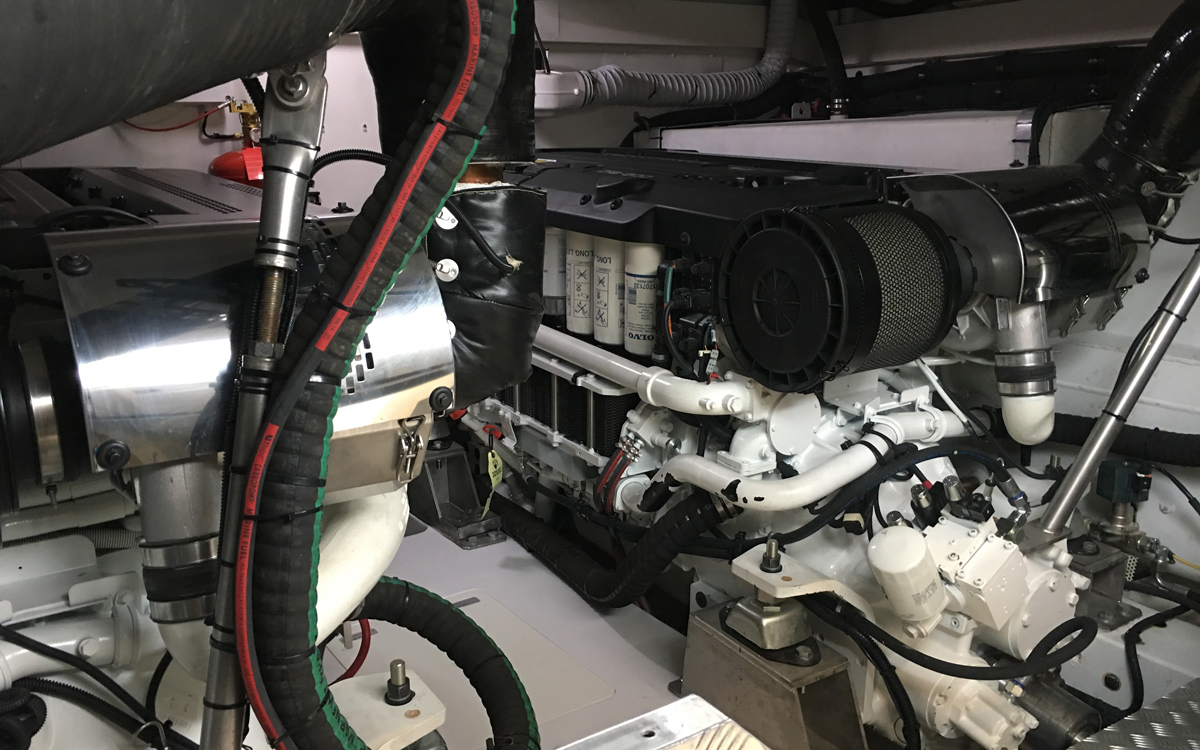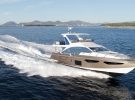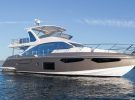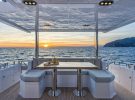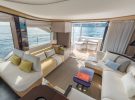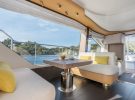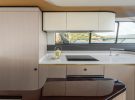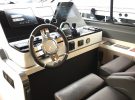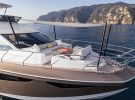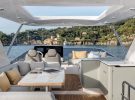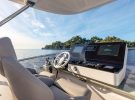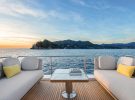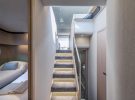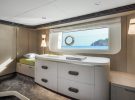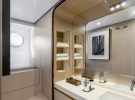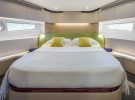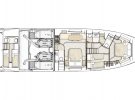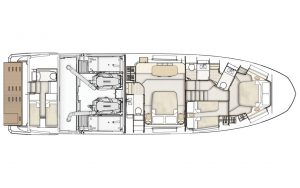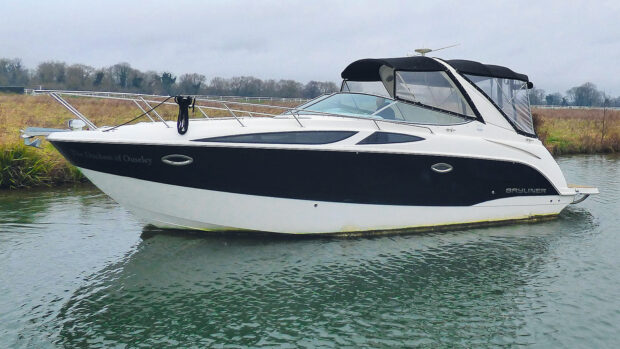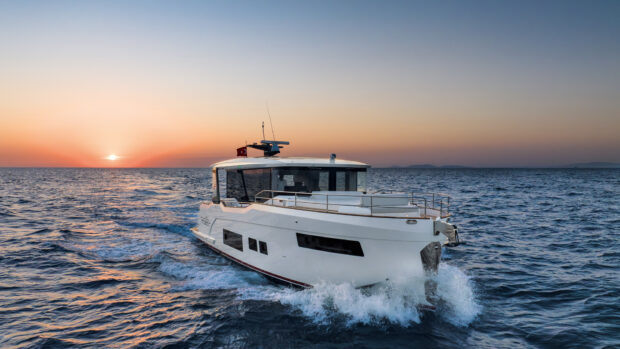With top-class competition to contend with, can the Azimut 60’s brave interior help it edge out in front of the pack?
To be in the market in the market for a 60ft flybridge is to be presented with some of the finest craft the world’s boatbuilders have in their stables. These boats must meet a hugely demanding list of requirements and, sitting as they do on the threshold between being owner-run and managed by a skipper and crew, their layouts must be capable of catering for both scenarios.
When you are spending upwards of €1 million, it goes without saying that a certain level of space, luxury and quality are prerequisite – but wow factor is high on the agenda too. The latter is not something that Azimut struggles with; the bold Stefano Righini exteriors are instantly recognisable and possess a style and panache that set out to challenge its more conservative rivals.
This new Azimut 60 may replace the former model of the same name but it is more than a simple refresh; this boat has a brand new hull and an interior that is as bold, brave and opinion-splitting as Righini’s avant-garde exterior.
Smooth curves
That interior is designed by Achille Salvagni, one of Italy’s most celebrated interior designers, who up until this point has mainly created interiors for boats of 80ft plus.
His signature style includes curvaceous furniture and bold pastel colours teamed with darker, more muted timbers. Azimut says there are 44 separate curves throughout the interior and, though I can’t admit to having counted each and every one, I can well believe it.
Everything from the sofa bases to the tables and galley counters has a smoothly rounded edge, which is as distinctive as it is practical. How many modern interiors are peppered with sharp corners and hard edges that threaten to jab you at any moment if the boat takes a big impact out at sea? There is no such concern on the Azimut 60.
Article continues below…

Azimut 55 review – curvy interior gives this Italian flybridge a cutting edge
The Azimut 55 has an interior to die for but is that enough to topple such a talented crop of
£1100000

VIDEO: Princess 62 review
Clever styling, astonishing amounts of space and a host of neat details give the Princess 62 exceptional showroom appeal. So
Our test boat had the light wood option, which complemented the dark wenge floorboards and the textured synthetic floor covering used in the aft section of the saloon. It’s a good choice to use in this part of the boat because it means guests can wander into the saloon with wet feet and not worry about slipping or staining the carpet.
The use of colours, materials and textures is exquisite in its thoughtfulness and there are fine details, such as the gold bases under the saloon sofas and brass spotlights over the dinette that add a sense of occasion. It won’t appeal to all tastes but whereas rivals’ interiors err on the side of safety and depend on the owner’s touches to add verve, the Azimut’s has ready-made flair and attitude all of its own.
There is a downside however, and that’s a lack of dedicated handholds. Yes, there are fewer hard edges to knock yourself against but it’s still important to be able to hang on to something as you move through the boat at sea. Currently, the backrest of the dinette naturally falls to hand and, on our test boat, was already sporting some grubby handprints thanks to its assumed role as a handhold.

Azimut says there are 44 curves within the 60’s striking interior
Azimut has opted for an amidships galley configuration, which leaves space aft for a relaxed and welcoming lounging area, perfect for a cosy drink before bed. This puts the dinette up quite a tall step and opposite the galley, which works well in that transporting food and drinks from kitchen to table is easy.
In a bid to make the most out of the views from this raised level on the main deck, the starboard window runs from floor to ceiling and there is a cut-out in the bulwark to provide unimpeded views out over the water. Neither of these features is repeated on the port side, which may seem odd but you can only see one side of the boat at a time.
Bold design
The lower deck décor is no less ambitious. In the VIP cabin for example, the headboard is green velvet and there is a deep blue trinket box built into the surfaces either side of the bed. The reading lights are pearl-like orbs that pop out of the headboard, and gold liner peeps out from behind the hand grooves in the wardrobes.

Stepped cabin sides make it easy to get into the bed
It’s fun, almost cartoonish, but it’s functional too, like the way that you can lift the base of the bed with one hand to reveal a huge void perfect for storing empty suitcases. In fact, every bed on board lifts to reveal a lined storage area. The twin guest cabin doesn’t have an ensuite but those occupying it have use of the day heads so they needn’t share a bathroom with those in the VIP.
In the full-beam master cabin, the quirky layout is almost as interesting as Salvagni’s décor. The bed runs athwartships and is flanked by funky – and of course, curvaceous – bedside tables with large lamps seemingly hovering over them.
On the opposite side of the cabin is an oval-shaped storage unit; a signature Salvagni piece with bold, toy-chest handles disguising massively deep drawers. It dominates the space and encompasses the outlandish interior to a tee.

These drawers in the master cabin are classic Salvagni, with gorgeous curved edges and tactile rounded handles. For all its stylish intent, it’s also a fine storage space
Life under the sun
Back on deck, things may be a little more formulaic but all three outdoor entertaining spaces have been well designed. One of my favourite spots on the boat is the aft section of the flybridge where Azimut, unlike pretty much every rival out there, fits proper fixed seating to provide a comfortable elevated lounging space ideal for private drinks raised high above a bustling Med quayside.
You can opt to have a barbecue grill in this area or simply maximise the low-slung seating for group sundowners. There’s similarly clever thinking on the foredeck. There is the usual blend of seating and sunbathing space but Azimut has worked in a clever folding backrest atop the sunpads that faces back into the boat so guests can sit opposite each other for snacks and drinks around the folding table.
It’s simple but clever, as is the signature squared-off section at the very forward end of the deck, which means the area around the anchor winch and mooring gear is wider and flatter than usual, therefore safer for crew to use, and it allows for more space in the VIP cabin.

The Bedouin-style canopy offers shade over the foredeck and stows in the void below the windscreen bench
The lower helm seats are set quite high so can be a bit tricky to clamber up into, but once in the supportive chairs, the raised position and lack of blind spots means helming from the shelter of the saloon isn’t just something you do when rain stops play on the flybridge.
There is just about enough space to stand at the lower helm too, which is useful if you’re helming at night, for example, and need to have the nav gear within easy reach. Azimut likes to keep engine options simple so the 60 can be configured with either MAN i6 800s or the pair of Volvo Penta D13-900s we had fitted to our test boat.
Performance is broadly similar but you may notice the extra 200 combined horsepower when the boat is loaded with gear and blighted by mid-season growth. The Volvos are a fine match for the boat and it sweeps without fuss to 31 knots, though it does take a bit of time to get there.

Azimut’s slick digital management system means you can monitor and adjust most functions from the helm seat
Azimut’s electro-hydraulic steering takes all of the heavy lifting out of shifting the 60 from side to side and it reacts keenly to the helmsman’s inputs for a big old brute. The steering system that Azimut uses allows for increased rudder angle at slower speeds to make for a tighter turning circle but the feel and tenacity improves as speed increases.
The steering is so light as to feel lifeless at times, but this is a small price to pay for what easy work it makes of threading the Azimut 60’s 36-tonne heft about. Our boat had the optional Xenta joystick fitted. It’s a neat enough system that combines the props and thruster to go some way towards offering the same thumb-twiddling flickability of IPS.
That said, it feels dim-witted at times and, with a hefty pair of props biting into the water and thrusters fore and aft, it seems rather unnecessary. I would save the money.
On the water, the Azimut 60 goes about its business with consummate ease, ironing out the worst that albeit benign seas off Savona could offer us. It will sit at 25 knots in comfort and no doubt prove a relaxing cruiser for longer passages, though an 86db(A) reading in the cockpit at 25 knots isn’t entirely soothing and there were a few squeaks emanating from the dash that disrupted the peace.

There is access to the cockpit from either side of the bathing platform
Our verdict
The Azimut 60’s rivals are numerous and talented. The Sunseeker Manhattan 52 may be a touch smaller but it has a Motor Boat Award to its name, keen pricing and the option of shaftdrives or IPS pods. The other Brit, the Princess 62, is gracious and charming in a way that only Princess can make a boat, and it is absolutely vast inside. The Prestige 630 possesses a novel layout and has value for money on its side.
And let’s not ignore the Azimut’s homegrown competition either: the Absolute 58 Fly is a fantastic all-rounder, festooned with excellent detailing and possessing the finest IPS dynamics in the sector.
The Azimut 60 can’t compete with the space of the Princess, versatility of the Sunseeker or the pod-drive dynamics of the Absolute, but in the style stakes it has the others licked. That interior is a major point of difference and its charm extends far beyond the initial impressions of a quick sea trial or a tour at a boat show.
It’s a boat that feels special even if you aren’t in the mood to leave the marina thanks to the work of Achille Salvagni and Azimut’s decision to give him carte blanche. If it’s wow factor you’re after, the Azimut 60 has it in spades.
 Specification
Specification
LOA: 59ft 10in (18.3m)
Beam: 16ft 7in (5.1m)
Draught: 4ft 9in (1.46m)
Fuel capacity: 616 imp gals (2,800 litres)
Water capacity: 165 imp gal (750 litres)
RCD Category: B for 14 people
Design: Stefano Righini & Achille Salvagni
Displacement: 36 tonnes (loaded)
Test engines: Twin 900hp Volvo Penta D13s
Top speed: 30.1 knots
Cruising speed: 24 knots
Range at 8 knots: 779nm
Price from: €1.73m (inc VAT)
Price as tested: €2.09m (inc VAT)





